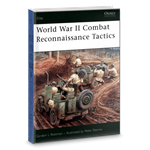Book: Intelligence Tactics in World War II
Content: text (32 symbols)
Uploaded: 11.05.2019
Positive responses: 0
Negative responses: 0
Sold: 0
Refunds: 0
$0.98
Undoubtedly, intelligence is an important aspect of warfare. The topic of intelligence is very broad and is associated with both the intellectual and military activities of countries. Basically, this book will focus on the military partitions of the United States, Great Britain, the Soviet Union, Germany and Japan. Of course, each of these countries has different troops, weapons, tactics and combat strategy - but at the same time, in addition to the differences, there are common moments inherent in the tasks of any intelligence. The most developed intelligence received during the Second World War - the outcome of entire battles often depended on the development and improvement of methods of conducting, collecting information, training intelligence officers! What is "intelligence"? First of all, military intelligence is the collection of information by reviewing the territory in which the enemy forces are located, as well as the control of their activities. The depth of intelligence is very different depending on the level of command: the lower the intelligence unit, the more detailed and accurate the information should have been. In the conditions of hostilities, the commander was responsible for the size of his units, their deployment, maksirovku, transport support and a number of other tasks. Based on intelligence data, the field commander needed to know the number of enemy forces, their manning, armament, defense, transport, equipment and a number of other aspects that were required to know before they began their own active hostilities. Divisional commanders needed to know the number of enemy battalions, artillery shells and tanks in front of them, the road map, as well as the size and nature of water bodies, lowlands, and elevations, because they could be used tactically before the battle began or during it. The regimental commander was interested in what was on the territory adjacent to the intended battlefield, whether bridges at crossings are able to withstand the weight of tanks, are there any obstacles that could slow down his progress. The battalion commander was in charge of reconnaissance, which concerned only field conditions, the number of nearby enemy units and the possibility of using the terrain and the weather for a successful offensive. The company commander was obliged to monitor the absence of enemy snipers, as well as to ensure the safe approach of their soldiers to enemy units before the start of the battle. While intelligence is usually presented as ground patrols, valuable information can also be obtained by examining enemy maps, using radio interception and using optical devices, as well as based on aerial reconnaissance data. Ground-based reconnaissance using radar was in its infancy during World War II, but by the end of the war yielded certain results.
Title: World War Two Combat Recoinessance Tactics
Author: Gordon Rottman
Pages: 62
PDF
Size: 14 MB.
Quality: Excellent
Language: English
Year of publication: 2007
Author: Gordon Rottman
Pages: 62
Size: 14 MB.
Quality: Excellent
Language: English
Year of publication: 2007
No feedback yet
